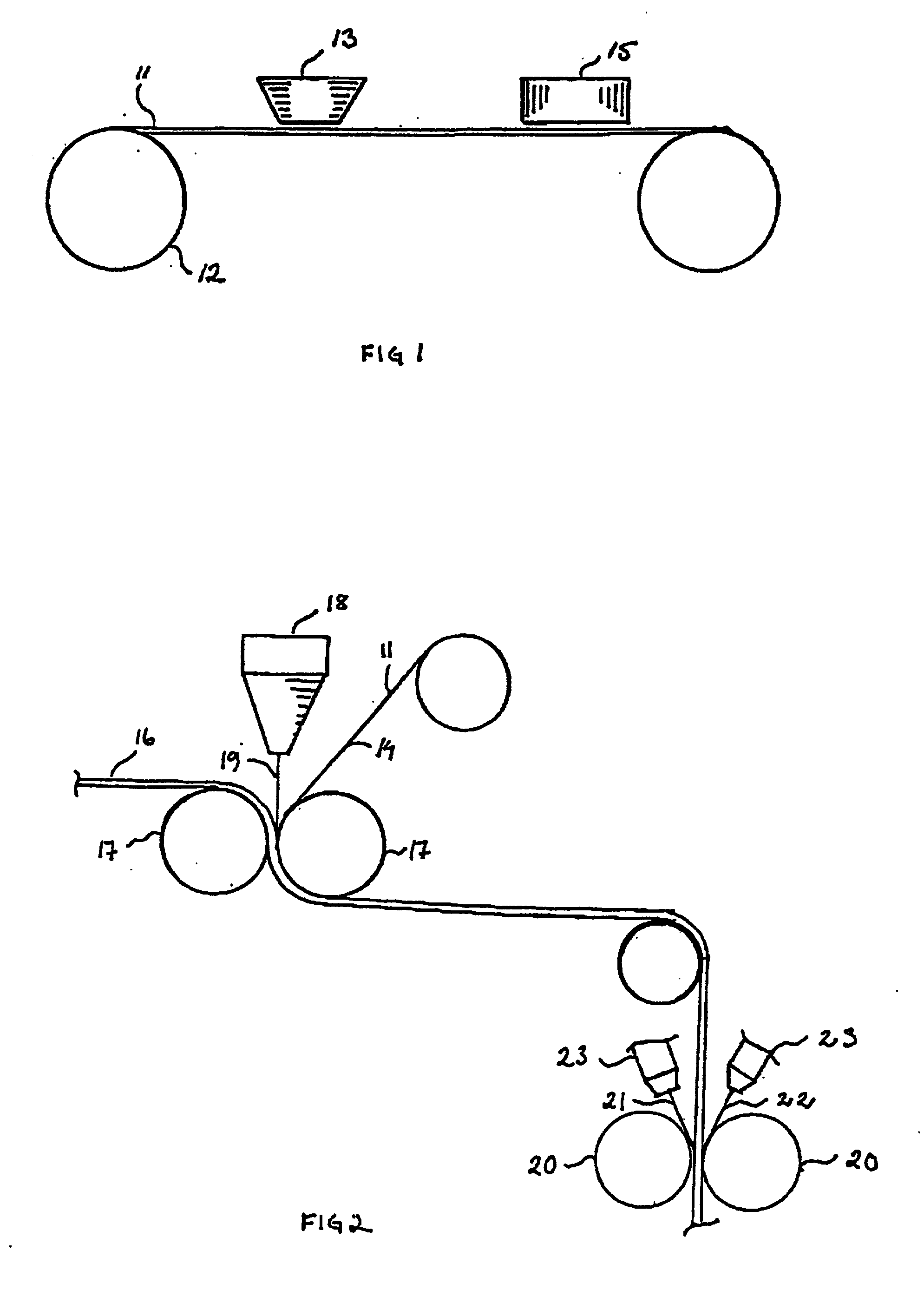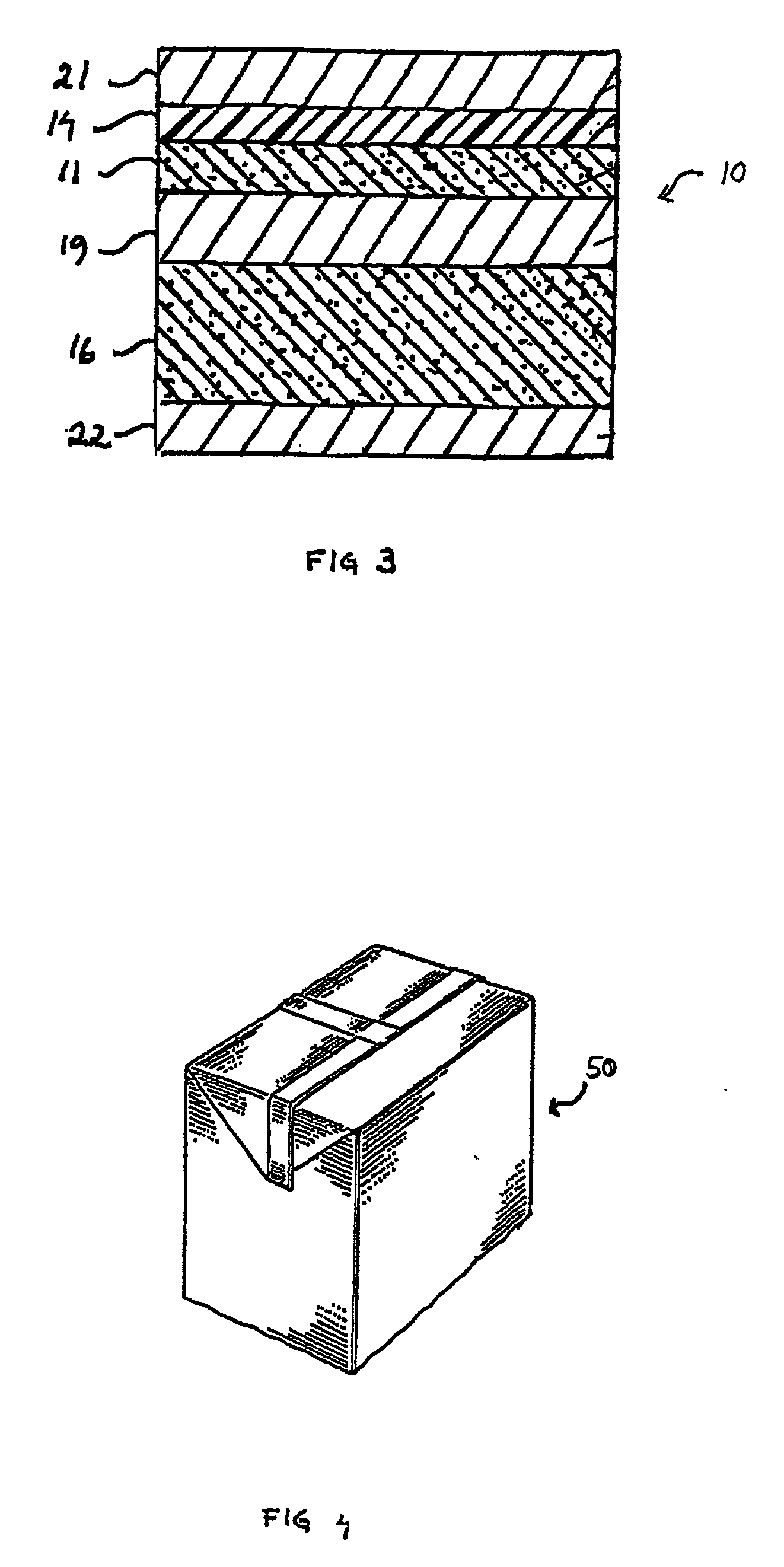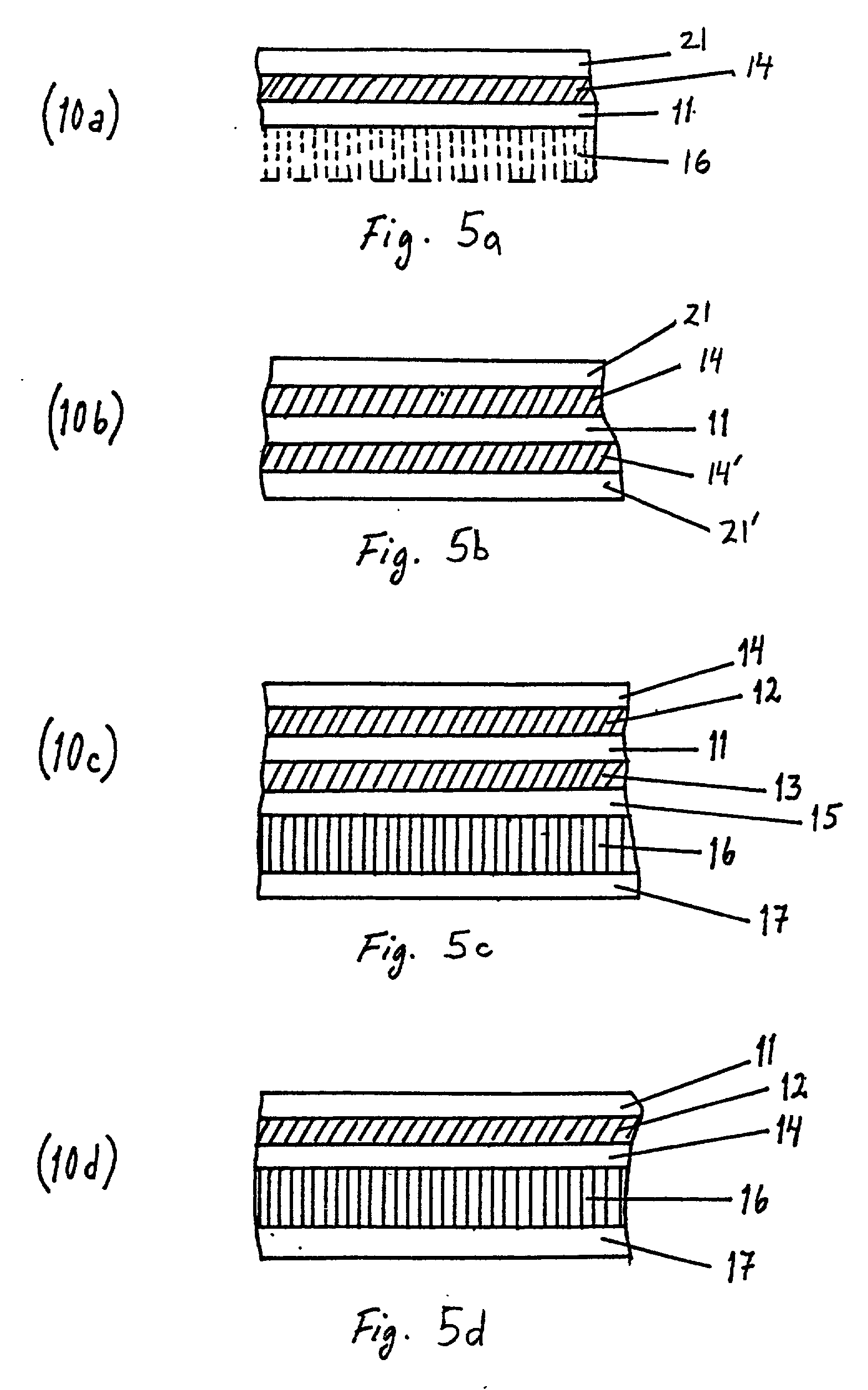Laminated packaging materials and packaging containers produced therefrom
- Summary
- Abstract
- Description
- Claims
- Application Information
AI Technical Summary
Benefits of technology
Problems solved by technology
Method used
Image
Examples
example 2
[0131] Example 2
[0132] PVOH with EAA was coated in a pilot plant onto LDPE-coated thin carrier layer paper of surface weight 13 g / m.sup.2. The PVOH / EAA was dispersion coated onto the LDPE-coated side of the PE-coated thin carrier layer paper. The PVOH / EAA coating had a layer thickness of 5 microns. The LDPE layer was 10 g / m.sup.2. Oxygen permeability was measured in cm.sup.2 / m.sup.2, 24 h, 1 atm.
2 Web temp. Curing temperature O2 permeability (just after drying) (air temp. in oven) (23.degree. C., 50% RH) (80% RH) When coating PVOH with 20% EAA: 100 225 0.02-0.05 80-100 150 225 0.02-0.05 25-30 When coating PVOH with 5% EAA: 100 225 0.02-0.05 60-80 150 225 0.02-0.05 10-15 When coating PVOH with 0% EAA: 100 225 0.02-0.05 dissolves 150 225 0.02-0.05 dissolves
PUM
| Property | Measurement | Unit |
|---|---|---|
| Length | aaaaa | aaaaa |
| Linear density | aaaaa | aaaaa |
| Linear density | aaaaa | aaaaa |
Abstract
Description
Claims
Application Information
 Login to View More
Login to View More - R&D
- Intellectual Property
- Life Sciences
- Materials
- Tech Scout
- Unparalleled Data Quality
- Higher Quality Content
- 60% Fewer Hallucinations
Browse by: Latest US Patents, China's latest patents, Technical Efficacy Thesaurus, Application Domain, Technology Topic, Popular Technical Reports.
© 2025 PatSnap. All rights reserved.Legal|Privacy policy|Modern Slavery Act Transparency Statement|Sitemap|About US| Contact US: help@patsnap.com



